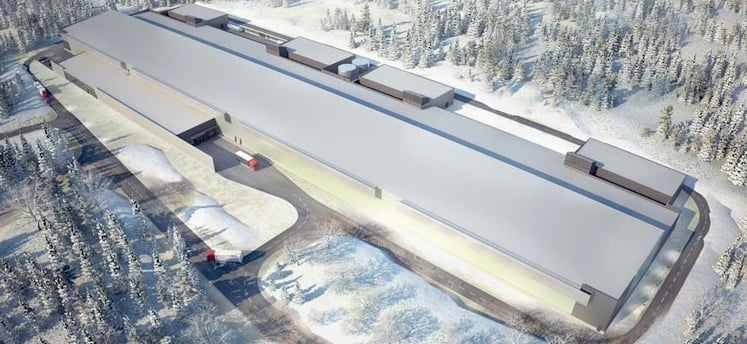This article is more than 1 year old
Facebook triple stuffs Swedish data center
It's boxy, but good – and very cold
Open Compute Summit In concert with the launch of the Open Compute Foundation on Thursday in New York, social media giant Facebook announced it is building a data center in Sweden close to the Arctic Circle, its first outside of the United States.
The massive data center, which will be three times the size of the 300,000 square footer that Facebook opened in Prineville, Oregon in April, will be located in Lulea, Sweden, a city of 74,000 folks that is situated at the same latitude as Fairbanks, Alaska and Yakutsk, Russia.
Speaking at the Open Compute Summit this morning in New York, Frank Frankovsky, director of hardware design and supply chain at Facebook, said that the Swedish town won out over other potential European sites for the first Facebook European data center because of its cold climate and its large supply of very steady (and presumably relatively cheap) electricity, thanks to the hydroelectric dams there. The steady and redundant electricity supply means that the new site won't need some generators and power distribution components that are necessary in the Prineville data center, saving capital.
"After a rigorous review process of sites across Europe, we concluded that Lulea offered the best package of resources – including a suitable climate for environmental cooling, clean power resources, available land, talented regional workforce and supportive business and corporate environment," said Tom Furlong, director of site operations at Facebook, in a statement announcing the site selection for the data center.
The nearby Lule River generates 9 per cent of Sweden's electricity (about 4.23 gigawatts), and the average annual temperature is 1.3 degrees Celsius. Because the area was dominated by pulp mills, steel mills, and mining operations that required a reliable supply of electricity, the area has a highly redundant electric grid hooking into all that hydro power. Toss in close proximity to Lulea University of Technology and the increasing prevalence of data centers and you can see why the area around Lulea has been nicknamed the "Node Pole."
Construction of the Facebook Lulea data center will begin immediately, and it will run primarily on hydro power. It will be built in three chunks, each one the size of the Prineville data center; the first third will be operational within twelve months and the whole thing will be up and running by 2014. It will create about 300 full-time jobs once it is done, and a slew of construction jobs in the meantime.
The data center will consume 120 megawatts of juice, or about 2.8 per cent of the electricity generated in the Lulea region. But just in case something goes wrong, the Lulea site will have enough diesel backup generators to power the whole shebang.
Facebook did not say what the Lulea data center would cost, but the Associated Press cites Swedish government officials saying it will cost on the order of $760m, with the Swedish government kicking in $16m of incentives to win the deal.
While Greenpeace was not whingeing about Facebook melting the polar ice caps – at least not yet – the environmental watchdog has been on Facebook's case for its 40 megawatt Forest City, North Carolina, data center, which stokes itself mostly on coal and nuclear with only an estimated 3.6 per cent of its juice coming from renewable energy sources. Greenpeace has been running an Unfriend Coal campaign on Facebook, which over 700,000 people signed, and wants to take some credit for the greenish data center going into Sweden.
This is obviously silly. Facebook is running a business and it needs access to cheap power, and it just so happens that Sweden's hydro power, like that around Niagara Falls and in the Columbia River in Oregon, is cheap. If there was cold weather near an open coal pit, we all know what every data center operator in the world would do. ®

